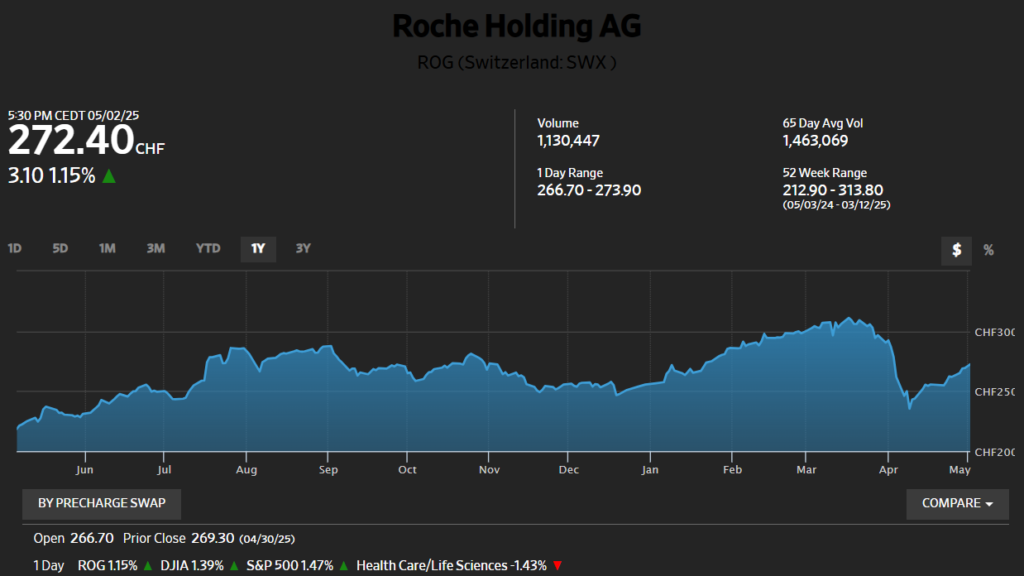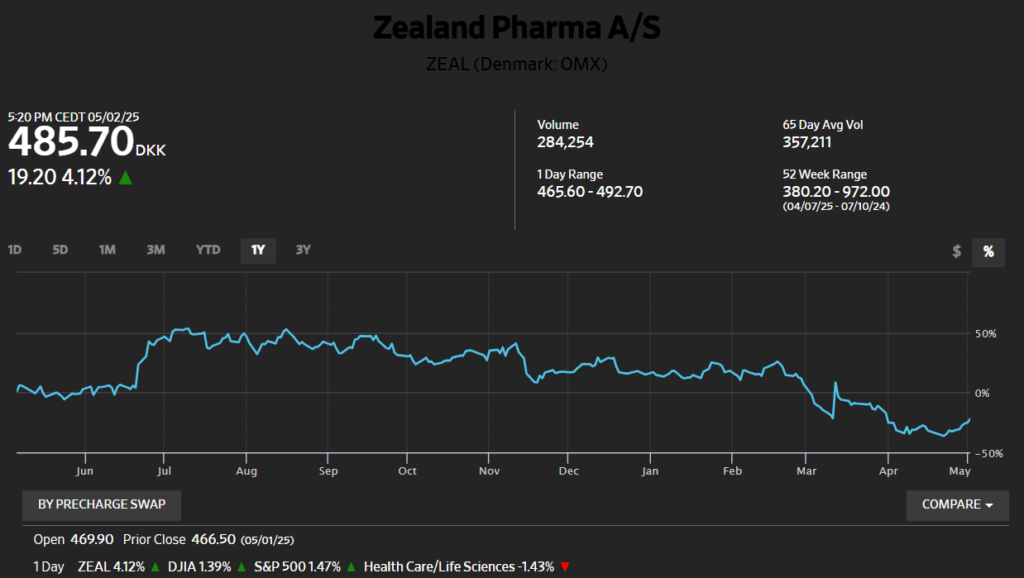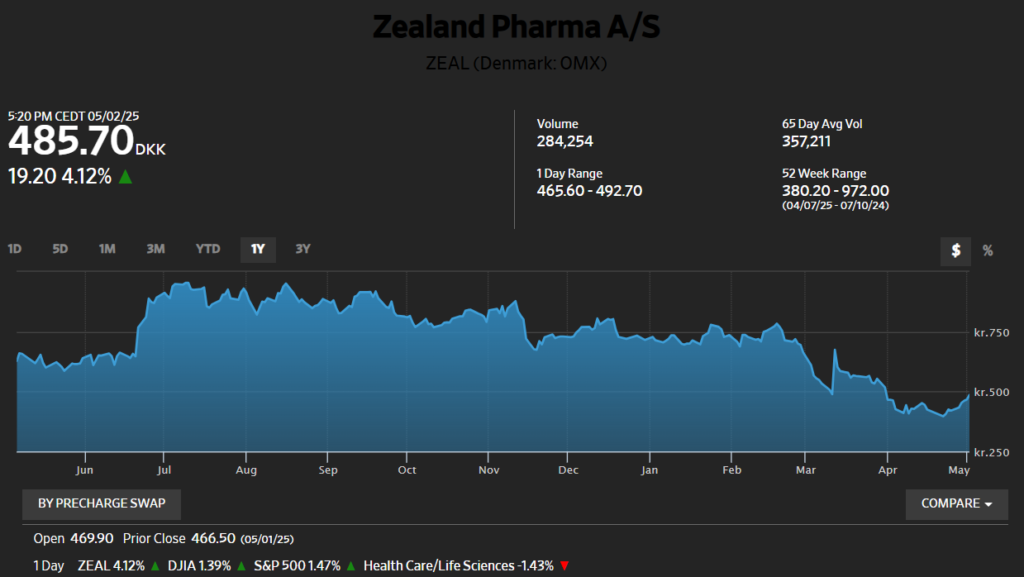

preCharge News BUSINESS — The ballooning obesity drug market may have a new contender after Roche struck a $5.3 billion deal to develop Danish biotech Zealand Pharma’s “next generation” weight loss candidate.
A High-Stakes Bid to Redefine the Future of Weight Loss Medicine
Roche is making a decisive move into the $100 billion weight loss drug market, announcing a $5.3 billion partnership with Denmark’s Zealand Pharma to co-develop petrelintide—an experimental amylin analog the biotech firm touts as a potential “backbone therapy” in the fight against obesity.
The deal, unveiled in March and expected to close in Q2 2025, signals Roche’s clearest attempt yet to challenge industry leaders Novo Nordisk and Eli Lilly. It could also reshape how obesity is treated globally.

ROG (Switzerland: SWX )
The Science Behind the Bet
What Makes Petrelintide Different?
Petrelintide mimics amylin, a hormone co-secreted with insulin in the pancreas that promotes satiety. Unlike GLP-1 drugs like Wegovy and Zepbound, which suppress appetite by mimicking gut hormones, amylin analogs aim to maintain lean muscle mass and improve tolerability—a key concern in the current generation of obesity medications.
Early trial data suggest the compound could deliver comparable weight loss to GLP-1 drugs—targeting 15–20% weight reduction in Phase 3 trials—without some of the side effects that have plagued other treatments.

ZEAL (Denmark: OMX)
“Roche wasn’t the only player at the table,” Zealand’s Chief Medical Officer David Kendall said, noting the intense interest from other potential partners. “This was a very competitive process until the end.”
Deal Terms and Market Reaction
A Strategic, High-Reward Gamble
Under the agreement, Roche and Zealand will co-develop and co-commercialize petrelintide both as a standalone treatment and in combination with Roche’s lead incretin drug candidate CT-388.
Zealand receives $1.65 billion upfront, with the possibility of milestone payments lifting the total value to $5.3 billion. On announcement day, Zealand shares surged 38%, while Roche added 4%.
“This ticks every box,” Bank of America wrote in a research note, describing the structure as favorable for both sides and noting Roche’s clear strategic intent to diversify beyond incretin-based therapies.
A Cultural and Scientific Match
Why Zealand Chose Roche
The partnership’s 50-50 structure was a dealmaker for Zealand. According to Kendall, “We pushed hard on this co-co. Roche didn’t just talk the talk—they followed through when the ink dried.”
Christina Sonnenborg Bredal, Zealand’s Chief People Officer, cited Roche’s scientific alignment and cultural fit as decisive: “They were the favorite the whole way through.”
Roche echoed this sentiment. “It wasn’t just about access to innovation,” said Manu Chakravarthy, the company’s global CVRM lead. “It was about a shared vision. That’s where the magic happens.”

Accelerating Toward Approval
Phase 2B Begins as Timelines Tighten
Zealand recently launched a Phase 2b trial for petrelintide in people with type 2 diabetes and obesity, with results expected by mid-2026. Phase 3 will follow. While Zealand had previously projected a market entry around 2030, Roche’s support may accelerate that timeline.
Still, the race is far from won. Novo Nordisk aims to bring its amylin combo candidate, CagriSema, to market by 2026. Eli Lilly is advancing oral obesity drug orforglipron. AbbVie has entered the amylin race through a licensing deal with Gubra.
“We don’t have the luxury of time,” Chakravarthy said. “The horizon must be shorter.”
The Bigger Picture
A Market in Transformation
Investor appetite for obesity treatments has soared, and the stakes are higher than ever. With the Zealand deal, Roche is staking its future in a market expected to swell into the hundreds of billions by the early 2030s.
“This isn’t about playing catch-up,” Chakravarthy emphasized. “It’s about redefining the treatment landscape.”
Zealand Pharma A/S | 1-Year Market Data

ZEAL (Denmark: OMX)
Want to earn some extra money on the side? Buy PCPi Coin or Subscribe to VIP and get dividens monthly.
____
Associated Press, CNBC News, Fox News, and preCharge News contributed to this report.
























